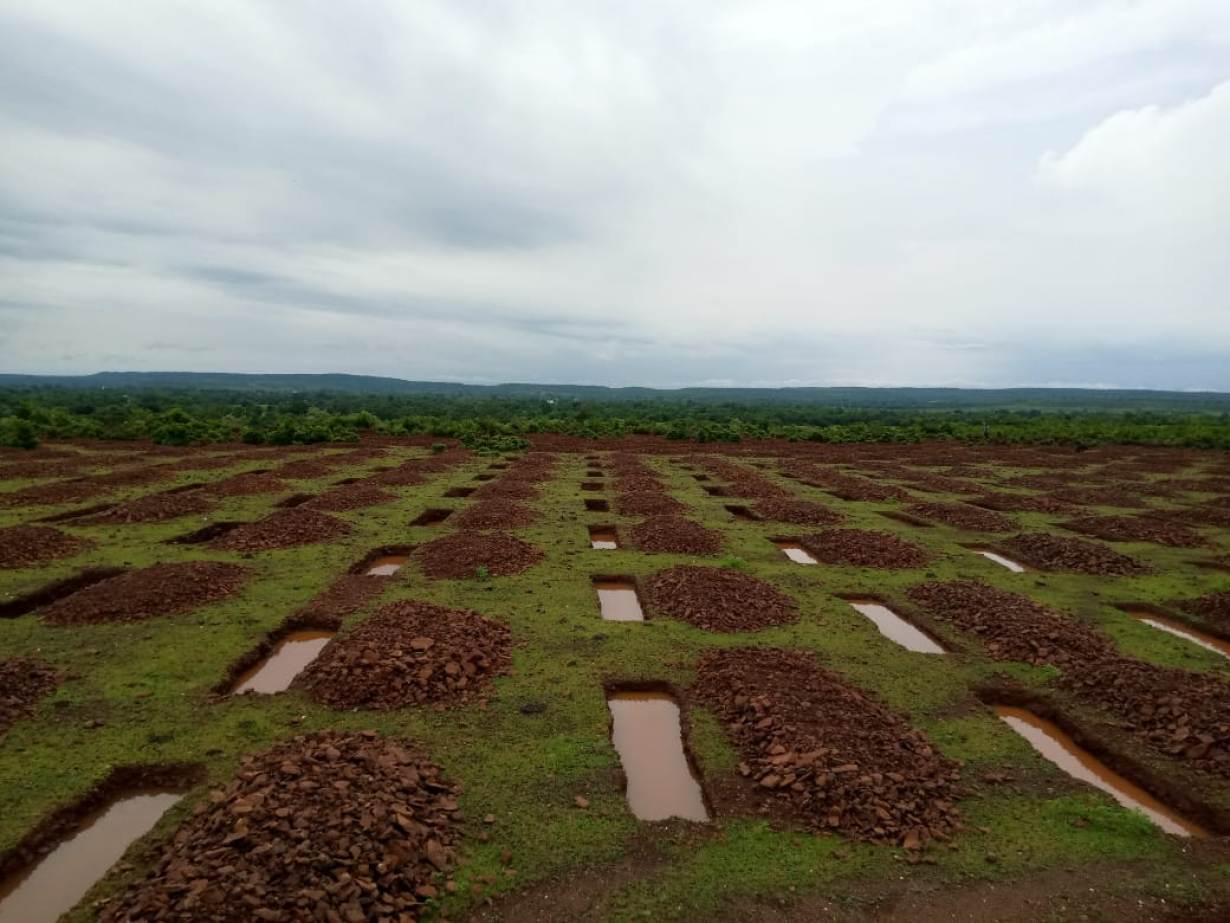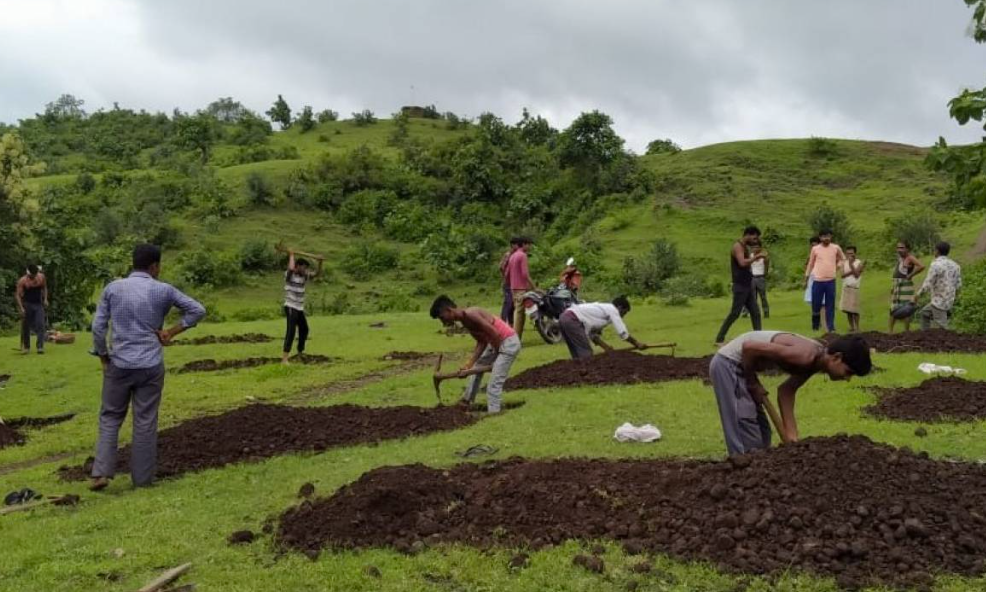Water security work is also providing income to migrants in India
A water security project is giving work to thousands of migrant workers who rushed home in March after Indian Prime Minister Narendra Modi declared a nationwide lockdown.
B
asant Ahirwar worked as an expert mason in India’s northern Uttar Pradesh state before the country’s coronavirus lockdown shut down business and forced him to return, jobless and largely on foot, to his home in central India’s Madhya Pradesh state.
Now, however, he has found new work: Digging water capture pits into the hillsides of his drought-hit home district, a project aimed at restoring depleting aquifers and providing an income to thousands of unemployed workers.
About 7,000 returning migrant workers and other unemployed people have been hired to do the work, with 50,000 pits dug since April on more than 40 hills around Sagar district, authorities said.“This work has become a means of sustenance for us,” said Ahirwar, who said he was being paid about 190 rupees ($2.50) a day for the work – a third of what he used to get as a mason but welcome in a time when few other jobs are available.

Water-retention trenches in Sagar district, in India’s Madhya Pradesh state. Photo by Thomson Reuters Foundation/Shuriah Niazi
He said rainwater was already collecting in the trenches and “the hills, which were earlier barren, have now become lush and green”, raising the prospect that farming in the district, slammed by drought, could become more successful again.
The work, which had been carried out earlier on a smaller scale, is being done under the Mahatma Gandhi Rural Employment Guarantee Act, which aims to offer at least 100 days of paid employment a year per family in need of work.
Ichchhit Garhpale, the head of Sagar district’s panchayat, or local council, said the effort aims to improve groundwater levels in the district.
As rainwater flows down the hills, it is trapped in the trenches, he said, and percolates slowly into the soil, rather than rushing away and causing erosion.
He said the pit system could help capture as much as 60 million litres of additional water in the course of a year.
Similar pits are planned on 20 to 25 more hills owned by the state government in the district, he said, as the project pushes ahead.
The work has come as a relief to thousands of migrant workers who rushed home in March after Indian Prime Minister Narendra Modi declared a nationwide lockdown as cases of the coronavirus began rising.
The shutdown left millions without prospects for work – but efforts like that in Sagar have helped shore up families and raised the prospect that some may remain in their home districts.
Erratic rains in decline
Rohit Vishwakarma, who used to work in Nagpur, almost 400 kilometres (250 miles) from Sagar, said he saw the project providing better long-term prospects at home.
“The area faces acute drinking water shortages. One has to cover long distances to fetch water during the summer season. The wells and hand-pumps run dry due to the fast-depleting groundwater,” he said.
“If we are able to solve the water problem, there is nothing better than that,” he said. And “if we continue to get this kind of work, we will not have to return to big cities to work.”

Workers dig water-retention trenches in Sagar district as part of a government jobs programme. Photo by Thomson Reuters Foundation/Shuriah Niaz
Sagar district sits in India’s Bundelkhand region, which is famous for its problems with drought. Erratic rain often leads to crop losses and joblessness, and the region struggles with other problems, from widespread illiteracy to inadequate healthcare.
Over the last decade, even normally erratic rains have been in decline, with the region seeing just half what is considered “normal” rainfall for the last six years, according to data from the India Meteorological Department.
But local officials said the trench digging – with trees in some cases planted on the soil removed, and grass beginning to sprout as well – may help turn around a bad situation.
“Grass and plants grow on it naturally, and thus food becomes available for villagers’ cattle and grazing animals,” said Garhpale, head of the local council.
He said that water levels in wells in the area also had shown signs of rising as a result of the work, and that problems with flooding downstream when heavy rain falls had been reduced.
The ideas presented in this article aim to inspire adaptation action – they are the views of the author and do not necessarily reflect those of the Global Center on Adaptation.